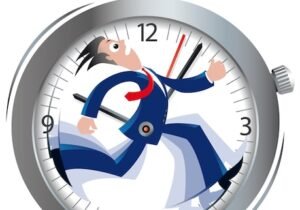Manage your ENERGY, not your TIME!

A client asked me: “Why am I more productive and get much MORE done just before a holiday? And why on other days even making a trip to the coffee machine feels like a chore?”
We all experience days when we are super productive and days when our productivity is almost zero. A lot of people accept this and just take it as it is, which is a pity because we have far more influence over our energy level than we realize.
” Time is a limited resource, energy is infinite. “
Time is a limited resource, energy is infinite. Why focus on something that is scarce when you can focus on something that is available in abundance?
Energy is the fuel AND the engine that drives your performance, productivity, joy, quality of relationships etc. Managing your vitality is so much more effective and rewarding than managing your limited time. Develop an energy maximizing mindset! Prioritize your vitality above everything else on your list.
And it is much simpler than you think!
The main physical matter that we call ‘energy’ is a chemical called Adenosine triphosphate or ATP. Adenosine triphosphate (ATP) is a complex organic chemical that participates in many physical processes. Found in all forms of life, ATP is often referred to as intracellular energy transfer.
We need ATP all the time and use about the same amount of ATP per day equivalent to our weight. So, it must be constantly produced and restored.The more ATP we produce the more energy we have available.
” To perform at your peak, make sure you have plenty of ATP available. “
And our brain, the most vital organ for our work consumes more than 20% of it! So, to perform at your peak, make sure you have plenty of ATP available.
How do we produce enough ATP? ATP in the human body is produced in 3 ways: via ‘Glycolysis’, via the ‘Citric Acid Cycle’ and via ‘Beta oxidation’.
Difficult words and it becomes too technical to extensively explain how these complex processes physiologically work, but they all find their origin in 5 practical physiological functions:
- Breath
- Food
- Movement
- Emotional State
- Recovery
Each component has its unique role in the process and can either enhance the process of energy management or deplete it. Find below a visual of how it works.
Energy management is nothing more than consciously shifting the levels to the healthy side of these spectra. Simple? Yes, but in practice, of course not easy.
Let’s elaborate on one of the elements: movement
When an athlete enters the sports field he needs the energy to perform. The more energy he has, the better the chance he will perform at his peak.
If he has little energy, (which can sometimes happen), he has no choice but to enter the field. When he starts moving, his body starts to use AND produce energy. And the good news is a healthy body always produces more energy than it uses. In physiology, they call this effect: the super-compensation effect. Overtime (and when healthy) we always end up with more energy than we have put in. The ‘return on energy is always positive when we start moving. That’s one of the reasons why we often feel so energized and clear-headed after a workout.
The opposite is true as well, when we do not put energy in, and we remain passive, energy production starts to decrease, and the cycle works the other way around.
A very straightforward difference between business and sports is; in business, people sit STILL, and in sportspeople MOVE. Therefore, athletes automatically unleash the energy far more than physically inactive workers. ‘Moving’ forces the body to free up energy. Energy is like a muscle, you have to train it to sustain it. Either use it or lose it.
” Energy is like a muscle, you have to train it to sustain it. Use it or loose it. “
One way of doing this in the business world is to simply MOVE as much as you can. Walk, stand up during meetings, take the stairs, order a standing desk, etc.
And there are so many ways to do so with regards to movement, breath, recovery, emotional state, and food.
Are these tips valuable to you? Follow us if you like to learn more practical guidelines for new healthy habits!
Download the mindmap HERE.
Keep your eyes on the ball!
AJ


